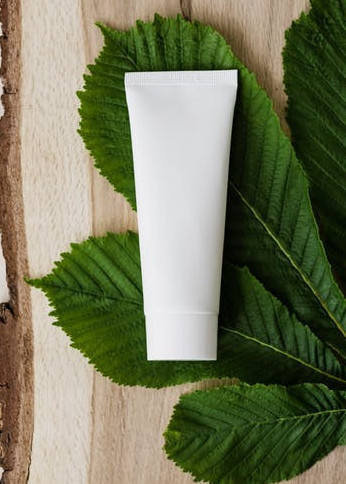Hey there?. If you’re reading this,

I bet you know the importance of adding deep conditioning into your hair care regimen. The method is sooo versatile that it could be a bit overwhelming! I know from personal experience within my own journey. There are a ton of products to sort through, knowing your specific hair needs based on the texture and how well the hair responds to moisture hydration, etc. Now the jury is still out on whether or not heat should be applied during this process, so let’s get into it shall we?
The Basics. Deep Conditioning Defined.
Firstly, let me explain what it means to deep condition your hair–particularly natural hair! Deep conditioning usually occurs after the hair is freshly washed, either with shampoo(s) or conditioner, also known as Co-wash. It would be ideal to deep condition your hair during every wash day routine, which generally occurs once a week or every other week. Natural hair is prone to dryness, so the deep conditioner aids in penetrating the strands deeply for optimal moisture, strength and sheen.
One can also deep condition hair before washing it. This method is especially helpful for a child’s wash day regimen, as going back and forth to the bathtub/kitchen sink to rinse could be a bit much for the little ones! I have personally tried both methods and each seem to get the job done in my opinion.
Deep Conditioning. Heat Methods and Benefits.
Now that we have familiarized ourselves with the how-to’s for deep conditioning, it’s time to discuss heat application. There are various ways to apply heat, which could get sticky if you are just beginning and are unsure of what your hair likes. I will name a few methods that I have tried!
The Microwave Method: Place the desired amount of product into a microwave safe container and heat for a few seconds in intervals. I usually do 20-30 second intervals at least twice. I would not exceed three times to avoid overheating and ruining the conditioner. The first go ’round was a disaster! I heated my conditioner up for an entire minute AND I did so in the product’s original packaging. Big mistake lol. I had an unkempt mane and no conditioner to tame, but you live and you learn.
After the conditioner is successfully warmed, apply to damp sectioned hair and add a plastic cap or plastic bag if you do not have caps on hand. Some naturals choose to apply additional heat by sitting under a hooded dryer, but since the conditioner was already warmed before application it would be optional.
Leave the conditioner in for at least 20 minutes or the suggested time on the container. I usually leave on for about 45 minutes. Rinse and voila! The hair should be soft, manageable and ready for the next step which is likely the styling process.
The Stove Method: Place the desired amount of product into a heat-proof container. Also, use a pot and fill it just about half-way with water. Place the pot on the stove and sit the heat-proof container on top. Turn on the burner at low-medium heat and warm for about 10 minutes, stirring until the consistency becomes more loose and creamy.
I also like to add a carrier oil of choice to the deep conditioner while heating for added moisture! Be sure to watch it closely, as the conditioner can lose the nutrients and quality required to moisturize the hair if it is overheated. Remove from the stove with a mitten for precaution, apply to damp sectioned hair, leave on for at least 20 minutes, rinse, and boom.
Hooded Dryer Method: Many naturals may not have access to a dryer just chilling in the home, but this method is very effective. If you are able to invest in one, then by all means! I have a portable hooded dryer, but it is super old school lol.
It was my Mom’s from way back when, but I am still putting it to good use. Apply your favorite deep conditioner as instructed on its container and cover with a plastic cap for the desired amount of time. Rinse out with lukewarm or cool water and bam.
The Steamer Method: Again, who actually has a steamer just lying around the house? You may be surprised by how many naturals have one. I do not yet, but I hear that this is one of the most effective ways to penetrate those strands! Place the hood of the steamer over your conditioned hair and sit for 20 minutes. Rinse out with cool or lukewarm water. The end result should be soft, manageable, strong and healthy hair. I have got to give this a try!!
Deep Conditioning. Heatless Methods and Benefits.
To all my naturals whom prefer to beat the heat, you can get great results as well! Here are a few methods that I have tried and some that I have yet to do so.
Towel/T-shirt wrap method: First, place a plastic cap over your conditioned hair. Securely wrap a towel of choice (i.e. microfiber material works great for natural curls/coarse hair) and leave on your head for at least an hour. It should be left on long enough to create, trap body heat, and allow the conditioner to work its magic on the hair.
A t-shirt can also be used for this method. Remove the towel or t-shirt and plastic cap and rinse out thoroughly with cool or lukewarm water. I tried this method on my last wash day and my hair came out so soft and manageable! I left the conditioner on for about 2 hours. Of course if you are pressed for time you absolutely do not have to leave on for this long.
Baggy method: Apply your favorite leave-in conditioner or moisturizer to freshly washed and conditioned hair. Next, cover the hair with a shower or plastic cap. The cap should be secured in place with a ponytail holder/elastic band or even a butterfly clip. Leave on the head for a significant amount of time–30 minutes to 1 hour would be effective. Remove the cap and seal with an oil of choice to ensure that the hair remains moisturized.
Greenhouse Effect Method: Apply oil or your favorite conditioner to damp or dry hair. Cover with a plastic cap and wrap your head with a scarf, towel, or t-shirt to trap in heat! This method can be done for as little as 30 minutes to as long as overnight. I have yet to try this method, but I hear that it works great–especially for those with really dry hair. It is really a game-changer for optimal hair growth!
The Flip Side. Heat and Heatless Conditioning Imperfections.
I think that we can agree that we do not exist in a perfect world, right? So let’s briefly discuss the downsides of each method.
The use of heat is more time efficient. Hair can be properly moisturized in as little as 15 minutes, but heat should be used carefully. If used improperly, one can cause damage to the hair or scalp.
I have personally used my portable dryer on high heat and actually burned my ear, neck, and scalp slightly at the top of my head. Heat can be very beneficial to the deep conditioning process, but on the flip side it can be drying to hair. Also, certain natural curl patterns are more prone to dryness and breakage compared to other types.
If your hair seems to be dry no matter what, then you should probably try heatless conditioning methods for a prolonged period instead.
On the other hand, heatless conditioning methods can be time-consuming and may not penetrate the strands and moisturize as effectively as heat application. If you notice that your hair has a difficult time letting moisture in, then frequent heat use may be the way to go in order to get those cuticles open. The only true way to figure out what method works best is to experiment.
Deep Conditioning. Heat Use or Not, it is A MUST for Natural Hair.
Heat and heatless conditioning are each very effective. If you prefer heat, then make sure to apply enough product to your hair for the best results. If your hair is really dry, then it would not hurt to give the heatless methods a try. Have fun and learn through trial and error.
Lastly, be sure to finger detangle or use a wide tooth comb prior to drying or styling your hair, especially if the hair is not quite manageable after rinsing out the deep conditioner. No matter which method you try, you absolutely cannot go wrong with deep conditioning!
Sharing is caring, so please feel free to discuss your go to deep conditioning method below!
